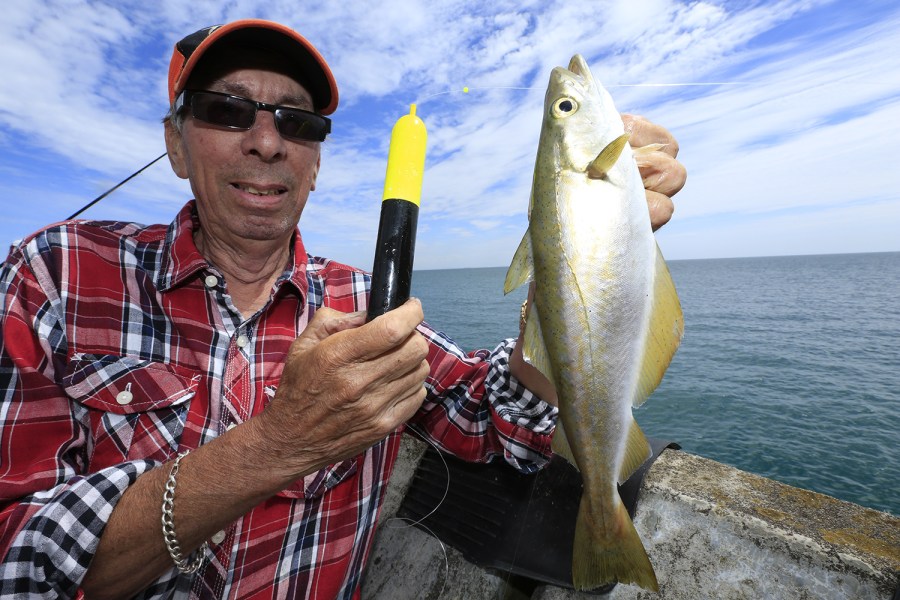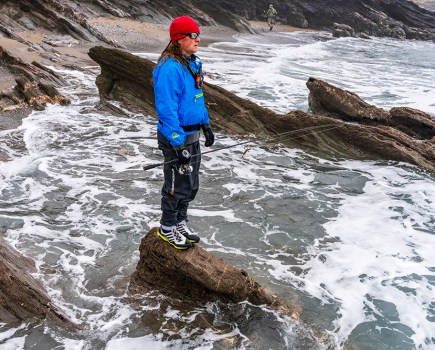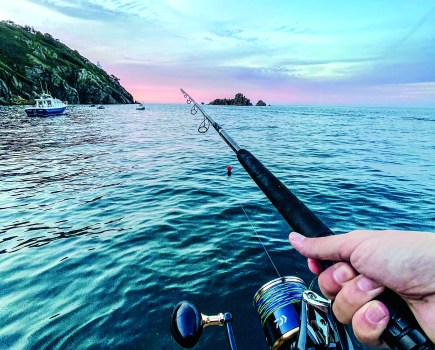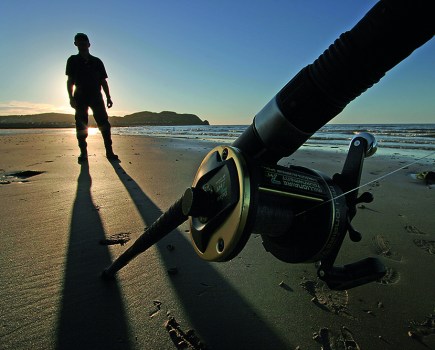How to fish a sliding float effectively, a tactic that can be deadly in summer when the fish are looking for food higher up in the water
A calm, clear sea offers the perfect opportunity to lighten up your tackle and fish with a sliding float, but because it’s easier just to leger with a lead weight and baited hook few sea anglers ever try a float rig.
Of course the worth of using a float is that the bait can be fished up off the seabed, even close to the surface and that’s where lots of the summer and autumn species feed. Mackerel, garfish, mullet, pollack, scad, bass and a few more are not always feeding hard on the sea bed, often they swim up in the water and use the tide and currents to find food.
The key to float fishing is to put your bait at the depth that the fish are feeding. When using a fixed float, the problem is that 12ft is about as deep as it is practical to cast the rig because of its long trace. The answer is to use a sliding float.
This is a float with a hole through the centre, through which the lines runs. This enables the angler to fish any depth required, simply by tying a stop knot on the mainline where he wants the float to stop. Therefore a stop knot 20ft from the hook will fish the bait at 20ft.
Making a float rig
The basic set-up is a short 4ft trace with a hook at one end and a swivel at the other. A small bead is then threaded on the mainline, then the float plus a lead bullet that is sufficient to cock the float and then the mainline is tied to the swivel.
Add the stop knot to the mainline above the float. This can be in the form or a slightly lower diameter monofilament line or power gum tied in a four-turn Grinner knot. The knot needs to be able to travel through the rod rings without obstruction. If you trim the ends of the knot so that they are 5cm long the knot will pass through the rod rings, but not the float. The small bead on the mainline prevents the stop knot from jamming in the top of the float.
Depth is adjusted by moving the stop knots up and down the line. This is the part of the method that is very important because often the depth the bait is fished is crucial. As the tide is always moving, the depth is continually altering. Wet the knots before you move them to prevent line burn and do so slowly.
You can use a bullet, oval or similar lead weight, but it must be heavy enough to sit the float upright (cock it). The lead weight adds to the casting range of the rig and determines how much of the float remains above the surface and so is important to the tactic.
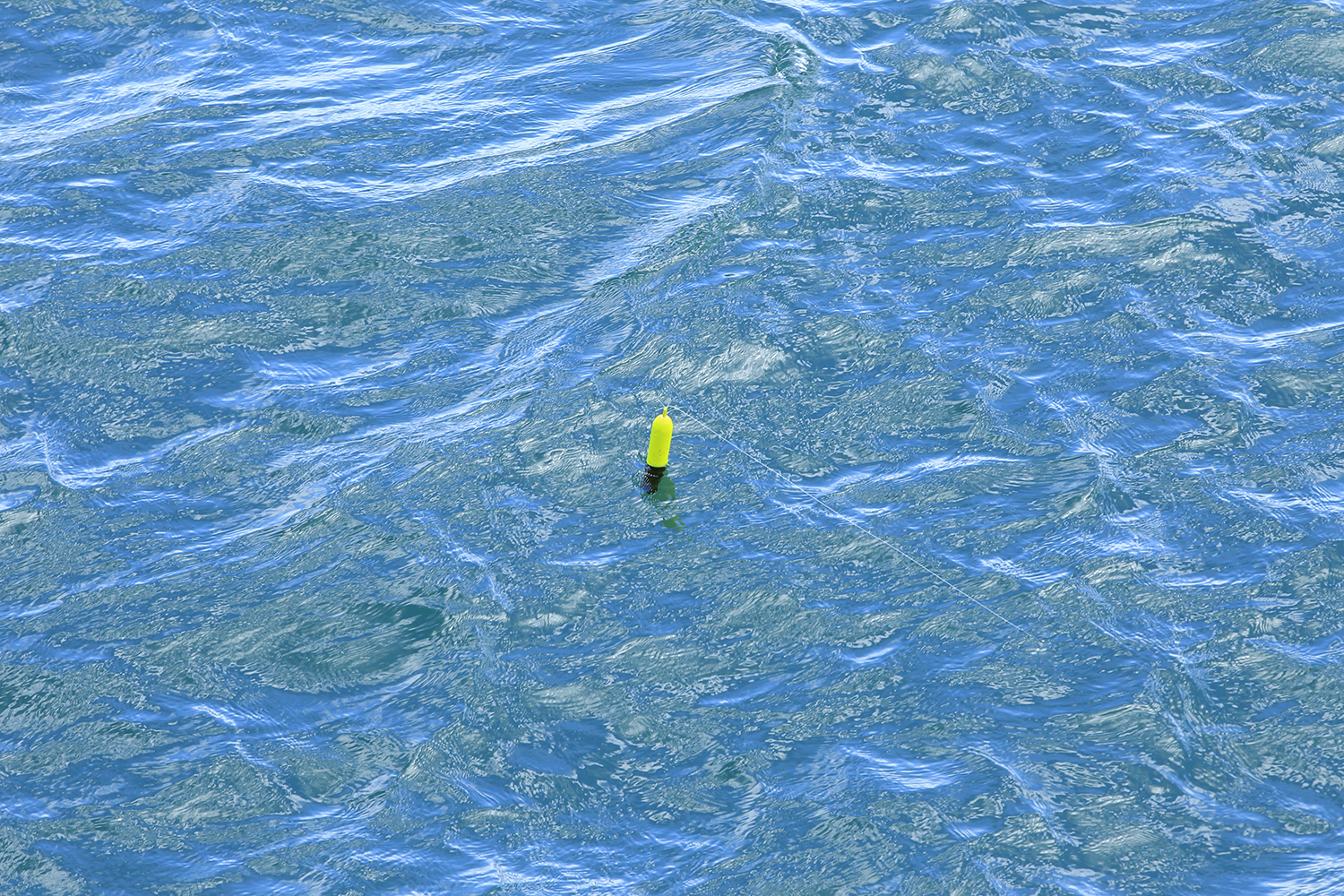
How to fish the float
You can fish the float on a beachcaster, but using a lighter bass or Continental-style rod offers more enjoyment and braid line more direct contact and fishing feel.
A fixed float rig also has its uses, especially for mackerel and garfish, which can often be within 6ft of the surface. Using a lighter rod and line means the float can be cast and retrieved easily with continual movement very often deadly for these species.
The fixed float rig can also be fished as a slider. For this method, it is made up with an American snap link tied above the float which is then clipped to the mainline allowing the complete float rig to slide down the line to the surface on a rod that is already bottom fishing. This is a great way to enjoy fishing with a bait both on the sea bed and near the surface.
Choosing your float
Sea floats are generally large with the cigar-shaped type with a hole through the centre the best for the larger species.
For mullet or pollack a large float can prevent them diving back into weed, while for mullet a slim float offers less resistance to a biting fish.
Floats come in polystyrene and plastic with the former the most buoyant. Plastic is better for long-range casting. For mullet fishing when the gear may need to be scaled down, a bottom fixed or sliding waggler float is preferred.
Remember, when you chose a float it needs to be visible from a long distance if you intend to fish down tide. A bright and bulbous style is best and the type with a slot for a starlight enables it to be seen in the dark. You can always drill the float and glue in a starlight holder.
Don’t ignore the bubble float because these can be partially filled with water to add to their casting weight, while the clear variety is less obtrusive to species like bass for fishing a live sandeel or head-hooked ragworm.

